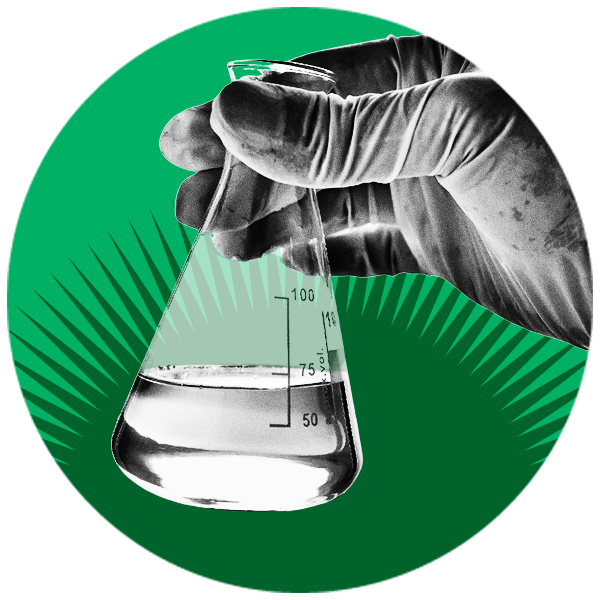Climate Action Fast Facts
Check here for regularly updated facts and findings on climate and its links to the economy, social issues, nature and more.
For downloadable pdfs of factsheets and graphic assets, see the Digital Library.
- Climate change can be a natural process where temperature, rainfall, wind and other elements vary over decades or more. In millions of years, our world has been warmer and colder than it is now. But today we are experiencing unprecedented rapid warming from human activities, primarily due to burning fossil fuels that generate greenhouse gas emissions.
- Increasing greenhouse gas emissions from human activity act like a blanket wrapped around the earth, trapping the sun’s heat and raising temperatures.
- Examples of greenhouse gas emissions that are causing climate change include carbon dioxide and methane. These come from burning fossil fuels such as gasoline for driving a car or coal for heating a building. Clearing land and forests can also release carbon dioxide. Landfills for garbage are another source. Energy, industry, agriculture and waste disposal are among the major emitters.
- Greenhouse gas concentrations are at their highest levels in 2 million years and continue to rise. As a result, the earth is about 1.1°C warmer than it was in the 1800s. The last decade was the warmest on record.
- Many people think climate change mainly means warmer temperatures. But temperature rise is only the beginning of the story. Because the Earth is a system, where everything is connected, changes in one area can influence changes in all others. The consequences of climate change now include, among others, intense droughts, water scarcity, severe fires, rising sea levels, flooding, melting polar ice, catastrophic storms and declining biodiversity.
- People are experiencing climate change in diverse ways. It affects our health, ability to grow food, housing, safety and work. Some of us are already more vulnerable to climate impacts, such as people living in small island developing States. Conditions like sea-level rise and saltwater intrusion have advanced to the point where whole communities have had to relocate. In the future, the number of “climate refugees” is expected to rise.
- Every increase in global warming matters. In a 2018 report, thousands of scientists and government reviewers agreed that limiting global temperature rise to no more than 1.5°C would help us avoid the worst climate impacts and maintain a livable climate. Yet the current path of carbon dioxide emissions could increase global temperature by as much as 4.4°C by the end of the century.
- The emissions that cause climate change come from every part of the world and affect everyone, but some countries produce much more than others. The 100 least-emitting countries generate 3 per cent of total emissions. The 10 largest emitters contribute 68 per cent. Everyone must take climate action, but people and countries creating more of the problem have a greater responsibility to act first.
- Climate change is a huge challenge, but we already know many solutions. These can deliver economic benefits while improving our lives and protecting the environment. We also have global agreements to guide progress, such as the UN Framework Convention on Climate Change and the Paris Agreement. Three broad categories of action are: cut emissions, adapt to climate impacts and finance required adjustments.
- Switching energy systems from fossil fuels to renewables like solar will reduce the emissions driving climate change. But we have to start right now. While a growing coalition of countries is committing to net zero emissions by 2050, about half of emissions cuts must be in place by 2030 to keep warming below 1.5°C. Fossil fuel production must decline by roughly 6 per cent per year between 2020 and 2030.
- Adapting to climate consequences protects people, homes, businesses, livelihoods, infrastructure and natural ecosystems. It covers current impacts and those likely in the future. Adaptation will be required everywhere, but must be prioritized now for the most vulnerable people with the fewest resources to cope with climate hazards. The rate of return can be high. Early warning systems for disasters, for instance, save lives and property, and can deliver benefits up to 10 times the initial cost.
- We can pay the bill now, or pay dearly in the future. Climate action requires significant financial investments by governments and businesses. But climate inaction is vastly more expensive. One critical step is for industrialized countries to fulfil their commitment to provide $100 billion a year to developing countries so they can adapt and move towards greener economies.
Sources: IPCC (1), WMO (4, 7, 10), WMO (4), IPCC (4, 7), UN Climate Action (8, 10), World Bank (11).
- Human activities have warmed the atmosphere, ocean and land, producing widespread and rapid changes in the atmosphere, ocean, cryosphere and biosphere.
- The scale of recent changes across the climate system are unprecedented over many centuries to many thousands of years. Many changes are irreversible for centuries to millennia, especially in terms of the ocean, ice sheets and global sea level.
- Human-induced climate change affects every region. There is growing evidence of links to extreme heatwaves, heavy precipitation, droughts and tropical cyclones.
- Global surface temperature will continue to increase until at least the middle of the century. Unless we make sharp reductions in greenhouse gas emissions in coming decades, global warming will exceed 1.5 degrees Celsius, after which climate consequences will be even more severe.
- The more the world warms, the greater the changes in the climate system become. This includes more frequent and intense hot extremes, marine heatwaves, heavy precipitation, agricultural and ecological droughts in some regions, the proportion of intense tropical cyclones, and reductions in Arctic sea ice, snow cover and permafrost.
- Continued global warming will further intensify the global water cycle, making it more variable, and changing monsoon precipitation and the severity of wet and dry events.
- As carbon dioxide emissions rise, the ocean and land will be less effective at absorbing and slowing the accumulation of carbon dioxide in the atmosphere.
- With further global warming, every region will increasingly experience changes in the drivers of climatic impacts. Drivers will be more widespread at 2 degrees Celsius compared to 1.5 degrees Celsius, and even more so at higher levels of warming.
- Ice sheet collapse, abrupt ocean circulation changes and warming beyond current projections are less likely outcomes but cannot be ruled out.
- Limiting human-induced global warming requires limiting cumulative carbon dioxide emissions, reaching at least net zero. Strong reductions in other greenhouse gas emissions such as methane would also be required.
- Achieving low or very low greenhouse gas emissions would lead within years to discernible effects on greenhouse gas and aerosol concentrations and air quality. Discernible differences in global surface temperature would emerge in around 20 years.
Sources: Based on findings and projections from the IPCC’s Climate Change 2021: The Physical Science.
- The Earth is now about 1.1°C warmer than it was in the 1800s. We are not on track to meet the Paris Agreement target to keep global temperature from exceeding 1.5°C above pre-industrial levels. That is considered the upper limit to avoid the worst fallout from climate change.
- 2015-2019 were the five warmest years on record while 2010-2019 was the warmest decade on record.
- Global surface temperature has increased faster since 1970 than in any other 50- year period over at least the last 2000 years.
- On the current path of carbon dioxide emissions, temperature could increase by as much as 4.4°C by the end of the century.
- In 2019, greenhouse gas concentrations reached new highs. Carbon dioxide levels were 148 per cent of preindustrial levels.
- Greenhouse gas concentrations, already at their highest levels in 2 million years, have continued to rise.
- Since the mid-1980s, Arctic surface air temperatures have warmed at least twice as fast as the global average, while sea ice, the Greenland ice sheet and glaciers have declined over the same period and permafrost temperatures have increased.
- Emissions must drop 7.6 per cent per year from 2020 to 2030 to keep temperatures from exceeding 1.5°C and 2.7 per cent per year to stay below 2°C.
- The emissions gap in 2030, or the difference between necessary carbon dioxide reduction and current trends, is estimated at 12-15 gigatons carbon dioxide equivalent (Gt CO2e) to limit global warming to below 2°C. For the 1.5°C goal, the gap is 29-32 Gt CO2e, roughly equivalent to the combined emissions of the six largest emitters.
- To follow a 1.5°C-consistent pathway, the world will need to decrease fossil fuel production by roughly 6 per cent per year between 2020 and 2030. Countries are instead planning and projecting an average annual increase of 2 per cent, which by 2030 would result in more than double the production consistent with the 1.5°C limit.
Sources: WMO (1, 9, 10), IPCC (1, 3, 4, 6), WMO (2, 5, 7), UNEP (8)
- Adaptation to climate change safeguards people from higher temperatures, rising seas, fiercer storms, unpredictable rainfall and more acidic oceans. Some people are more vulnerable to these effects, such as those living in poverty.
- Small island developing States are particularly vulnerable without adaptation to storms and sea-level rise. For some of these countries, disaster-related economic losses have already been as high as 200 percent of the size of a national economy.
- Estimated annual adaptation costs in developing countries are in the range of $70 billion, but could reach $300 billion by 2030. Just 21 per cent of international climate finance goes to adaptation and resilience, about $16.8 billion a year.
- Globally, a $1.8 trillion investment in early warning systems, climate-resilient infrastructure, improved dryland agriculture, global mangrove protection and resilient water resources could generate $7.1 trillion in avoided costs and social and environmental benefits.
- Over 60 percent of countries have nature-based strategies in national climate action plans; a similar share has acknowledged that adaptation depends on protecting ecosystems and biodiversity.
- Better weather data along with early warning and emergency management systems reduce physical damage and economic losses. Universal access to early warning systems can deliver benefits up to 10 times the initial cost.
- Without adaptive measures, the number of people who lack sufficient water for at least one month per year will soar from 3.6 billion today to more than 5 billion by 2050.
- Solar-powered irrigation, weather alert systems, new crop varieties and other adaptive measures can help avoid a drop-off in global agricultural yields by up to 30 percent by 2050.
- Improving health systems could help prevent 250,000 additional climate- related deaths per year from 2030 to 2050, mainly from avoidable causes such as malnutrition, malaria, diarrhoea and heat stress.
- Worldwide, just 38 percent of small firms have invested in adapting to environmental risks, compared to 60 percent of large firms. During the COVID-19 pandemic, companies able to withstand disruption were five times less likely to lay off employees and more likely to have stable sales.
Sources: GCA (1, 4, 7, 8), IMF (2), UNEP (3), OECD (3), WRI/GCA (5), World Bank (6), WHO (9), ITC (10)
- Public climate finance, including $100 billion that developed countries have agreed to provide to developing countries each year, supports critical infrastructure for adaptation, resilience and the new renewable energy-based economy.
- Based on the most recent assessment conducted by developed countries, total climate finance counting towards the $100 billion commitment continues to fall short, reaching $78.9 billion in 2018.
- Although adaptation finance increased more rapidly between 2016-2018, its overall share of total public finance was only 21 percent in 2020. Adaptation costs for developing countries may be in the range of $140 billion to $300 billion per year by 2030, and $280 billion to $500 billion annually by 2050.
- Private finance could provide the biggest pool of capital. If sufficient international public climate finance is deployed to mobilize private resources, it will be possible to move from the billions to the trillions required.
- Over 160 firms with $70 trillion in assets have joined forces to steer the global economy towards net-zero emissions and deliver Paris Agreement goals.
- The combined global fiscal response to the pandemic was $18 trillion as of March 2021. The same decisiveness is imperative in the response to the climate crisis.
- COVID-19 recovery packages have not been green, by and large, despite general public support for a green recovery. In the Group of 20 countries, $250 billion has been directed to fossil fuels as opposed to only $146 billion to clean energy.
- The severe fiscal impacts of COVID-19 limit the ability of many developing countries to invest in recovery as well as climate action. The pandemic pushed half of low-income and least developed countries into debt distress or high risk of it. While some debt relief is available for 34 countries at risk of default, 9 countries are not eligible. They include small island developing States with acute climate vulnerabilities.
- Needed infrastructure investment is around $90 trillion by 2030; new infrastructure must be compatible with climate goals. Investing in resilient infrastructure in developing countries could deliver $4.2 trillion over the lifetime of new infrastructure. An investment of $1, on average, yields $4 in benefits.
- Switching to a clean economy could raise $2.8 trillion through carbon price revenues and the redirection of fossil fuel subsidies to public investments.
Sources: UN 2020 (1-4, 7), UN Climate Action (5), UN 2021 (6, 8), World Bank (9, 10)
- Empowering women and girls to have a voice and a role in decision-making on climate change-related issues is essential for sustainable development and greater gender equality.
- As early adopters of many new agricultural techniques, first responders in crises, entrepreneurs of green energy and decision-makers at home, women offer invaluable insights and solutions into better managing the climate and its risks.
- The climate crisis is not “gender neutral.” It exacerbates existing inequalities, leaving women and girls to experience unique threats to livelihoods, health and safety.
- Women are less able to confront climate change due to limited access to and control of environmental goods and services, less participation in decision-making and the distribution of environmental management benefits.
- During periods of drought and erratic rainfall, many women in low- and lower-middle income countries, who depend on agriculture, work harder to secure income and resources for their families.
- Current climate finance rarely reaches women and their organizations, and only a tiny proportion of funding focuses on their needs, rights and solutions.
- As climate change drives conflict across the world, women and girls face increased vulnerabilities to all forms of gender-based violence.
- When disasters strike, women are less likely to survive and more likely to be injured due to limited access to information, mobility, decision-making, as well as resources and training.
- Women’s and girls’ health is endangered by climate change and disasters by limiting access to services and health care, as well as increasing risks related to maternal and child health.
- Extreme heat increases incidence of stillbirth. Climate change also increases the spread of vector-borne illnesses such as malaria, dengue fever, and Zika virus, which are linked to life threatening maternal and neonatal outcomes.
Sources: UN Women (1, 3, 4, 5, 7, 9, 10), IPCC (2), UNEP (6), UNFPA (8)
- Climate action is not a budget buster or economy-wrecker. Shifting to a green economy could yield a direct economic gain of $26 trillion through 2030 compared with business-as-usual. This could produce over 65 million new low-carbon jobs.
- Significant investment in infrastructure is needed over the next 15 years, around $90 trillion by 2030. New infrastructure must be compatible with climate goals.
- Investing in resilient infrastructure in developing countries could deliver $4.2 trillion over its lifetime. An investment of $1 in resilient infrastructure, on average, yields $4 in benefits.
- More compact, connected and coordinated cities are worth up to $17 trillion in economic savings by 2050 and will stimulate economic growth by improving access to jobs and housing.
- Sustainable agriculture and strong forest protection could generate over $2 trillion per year of economic benefits, create millions of jobs and improve food security, while delivering over a third of the climate change solution.
- Doubling global renewable energy capacity by 2030 could save the global economy between $1.2 and $4.2 trillion each year, largely due to a massive reduction in costs from pollution.
- Putting a price on carbon and phasing out fossil fuel subsidies could raise $2.8 trillion that could be reinvested in public priorities.
- In 2020, G20 governments committed $233 billion to activities that support fossil fuel production and consumption, compared with $146 billion to renewable energy, energy efficiency and low-carbon alternatives such as cycling and pedestrian systems.
- Better water management could improve economic growth rates in some regions by up to 6 per cent.
- The costs of adapting to climate change in developing economies may be up to $300 billion by 2030. But investing in resilience may cut post-disaster intervention costs by at least half.
Sources: New Climate Economy (1, 2, 4-7), World Bank (3), UNEP and others (8), World Bank (9), IMF (10)
- A green transition, including a shift to renewable energy, the manufacturing of electric vehicles and construction of energy-efficient buildings, will create 24 million jobs by 2030, far more than the 6 million that could be lost.
- By 2030, among 163 economic sectors, only 14 are predicted to have employment losses of more than 10,000 jobs worldwide, and only two, refining and extracting petroleum, show losses of 1 million or more jobs.
- If cities in 21 emerging markets prioritize climate-smart growth in their recovery plans, they stand to gain as much as $7 trillion in investments and could create 144 million new jobs by 2030.
- Under certain conditions, jobs created by the renewable energy industry could total 42 million worldwide by 2050 – more than enough to offset jobs lost in fossil fuel industries, with more people able to find employment in manufacturing, installing, operating and maintaining renewable energy systems.
- Jobs in renewable energy reached 11.5 million globally in 2019.
- Heat stress could reduce total working hours worldwide by 2.2 per cent – a productivity loss equivalent to 80 million full-time jobs — and could cut global gross domestic product by $2.4 trillion in 2030.
- A circular economy, based on the principles of reduce, reuse and recycle, could create around 6 million new jobs in recycling and waste management.
- Solar photovoltaic industries created some 3.8 million jobs in 2019. Other large generators of new jobs in renewable energy were biofuels at 2.5 million jobs, hydropower at close to 2 million jobs and wind at 1.2 million jobs.
- Jobs in renewables are more gender balanced than in the broader energy field, with women holding 32 per cent of the total in 2019. In fossil fuels, they have only 21 per cent.
Sources: ILO (1), World Bank (2), IRENA (3), IRENA (4, 8, 9), UN (5), ILO (6), ILO (7)
- Derived from natural resources that are abundant and continuously replenished, renewable energy is key to a safer, cleaner, and sustainable world. Sunlight, wind and water, for example, are such sources that are constantly being replenished.
- Fossil fuels - coal, oil and gas - on the other hand, are non-renewable resources that take hundreds of millions of years to form. Fossil fuels, when burned to produce energy, cause harmful greenhouse gas emissions, such as carbon dioxide.
- Renewable energy is gaining ground. Nearly 30 per cent of the world’s electricity currently comes from renewable sources of energy today, compared to 20 per cent in 2011 (IEA and REN21). The biggest share is hydropower, followed by solar and wind, bioenergy and geothermal power (REN21).
- Renewable electricity generation grew by about 8 per cent in 2021, reaching 8,300 TWh (about twice the amount of electricity consumed by the United States in a year) - the fastest year-on-year growth since the 1970s (IEA).
- Renewable energy dominated investment in new power generation, accounting for an estimated 70 per cent of the US$530 billion spent on all new generation capacity in 2021. (IEA)
- Almost half of all renewable energy capacity is in Asia (48 per cent), followed by Europe with 21 per cent, North America with 15 per cent, and South America with 8 per cent of the global capacity. (IRENA)
- In 2021, 12.7 million people were employed in the renewable energy sector, up from 12 million in 2020. Close to two-thirds of all jobs are in Asia. China alone accounts for 42 per cent of the global total. (IRENA)
- The photovoltaic energy sector has the biggest share of employment in the renewable energy sector, providing 4.3 million jobs, followed by 2.4 million each in hydropower and biofuels, and 1.3 million in wind energy. (IRENA)
- Every dollar of investment in renewables creates three times more jobs than in the fossil fuel industry. The transition towards net-zero emissions will lead to an overall increase in energy sector jobs - while about 5 million jobs in fossil fuel production could be lost by 2030, an estimated 14 million new jobs would be created in clean energy, resulting in a net gain of 9 million jobs. (IEA)
- Prices for renewable energy technologies are dropping rapidly. Renewables-based electricity is now the cheapest power option in most regions. The cost of electricity from solar power fell by 85 percent between 2010 and 2020. Costs of onshore and offshore wind energy fell by 56 percent and 48 percent respectively. (IRENA)
- Investments in renewable energy need to triple by 2050, and the supply of electricity from clean energy sources must double within the next eight years, to put the world on a net-zero emissions trajectory by 2050 (WMO). An estimated $4 trillion a year needs to be invested in renewable energy by 2030 – including investments in technology and infrastructure (IEA). In comparison, the reduction of pollution and climate impacts alone could save the world up to $4.2 trillion per year (IRENA) and a global shift to a low-carbon economy can deliver at least $26 trillion in economic benefits through 2030 (UNFCCC).
- It is estimated that 90 per cent of the world’s electricity can and should come from renewable energy by 2050 (IRENA). In a few countries, such as Iceland, nearly 100% of electricity already comes from renewable sources today (UNEP).
- Most cars, trucks, ships and planes run on fossil fuels, such as gasoline, diesel and kerosene, which release carbon dioxide, a greenhouse gas. Road vehicles account for the largest part, but emissions from ships and planes continue to grow.
- The transport sector accounts for roughly 15 per cent of total greenhouse gas emissions, making it the fourth largest source of global emissions after the power, industry, and agriculture- forestry-land use sectors.
- Road transport is the largest source of emissions from transport, accounting for 69 per cent of all transport emissions. Aviation, i.e. air transport, accounts for about 12 per cent of total transport emissions, and shipping contributes about 11 per cent.
- Emissions from transport have increased fast over the last two decades, and since 2010 the sector’s emissions have increased faster than for any other end-use sector.
- Transport-related emissions in developing regions of the world have increased more rapidly than in Europe or North America – a trend that is likely to continue in coming decades.
- Without action, greenhouse gas emissions from transport could grow by up to 65 per cent by 2050. Alternatively, successful action to tackle greenhouse gases could reduce transport emissions by 68 per cent.
- Decarbonizing the transport sector will require a variety of transformative measures, including demand and efficiency strategies, electromobility, and alternative fuels for shipping and aviation.
- Battery-electric vehicles – when charged with low-carbon electricity -- have lower greenhouse gas emissions than internal combustion engine vehicles over the course of their lifecycle.
- Options for decarbonizing shipping and aviation still require more research and development, but advanced biofuels, ammonia, and synthetic fuels are emerging as viable options.
- Rail transport contributes only about 1 per cent of transport emissions, which can be further reduced through expanded use of available electric rail systems.
Sources: IPCC
- The unsustainable use of land, soil, water and energy for food contributes to greenhouse gas emissions that cause rising temperatures. Higher temperatures in turn affect resources to produce food. Up to 811 million people in the world faced hunger in 2020, as many as 161 million more than in 2019.
- Systems to produce, package and distribute food generate a third of greenhouse gas emissions and cause up to 80 per cent of biodiversity loss. Without intervention, food system emissions will likely increase by up to 40 per cent by 2050, given rising demand from population, more income and dietary changes.
- The food system currently accounts for around 30 percent of the world’s total consumption of energy, most still produced using fossil fuels that generate emissions.
- Over 17 per cent of food is wasted, and up to 10 per cent of global greenhouse gas emissions are associated with food that is not consumed.
- Under higher temperatures, declines in crop yields are likely. Heat stress also results in impaired quality and increased waste.
- The ocean has absorbed more than 90 per cent of the excess heat in the climate system, making it more acidic and less productive. This along with practices such as overfishing threatens marine resources that feed 3.2 billion people.
- Changes in snow cover, lake and river ice, and permafrost in many Arctic regions have disrupted food supplies from herding, hunting, fishing and gathering activities, harming livelihoods and the cultural identity of Arctic residents.
- Many practices can advance climate adaptation in food systems, such as erosion control, grazing land management, genetic improvements for tolerance to heat and drought, heterogeneous diets, and reduced food loss and waste.
- Pilot climate-smart agriculture initiatives in a number of countries have boosted productivity, lowered emissions, improved soil quality and water efficiency, and increased incomes and climate resilience.
- Consumption of healthy and sustainable diets presents major opportunities for reducing emissions from food systems and improving health outcomes, including through lower consumption of energy- and land-intensive animal-sourced foods.
Sources: United Nations (1, 2), FAO (1), IPCC (2, 5, 8, 10), FAO (3), UNEP (4), FAO (6), IPCC (7), World Bank (9).
- Climate change is the single biggest health threat facing humanity. The impacts are already harming health through air pollution, disease, extreme weather events, forced displacement, food insecurity and pressures on mental health. Every year, environmental factors take the lives of around 13 million people.
- Meeting the goals of the Paris Agreement could save about a million lives a year worldwide by 2050 through reductions in air pollution alone. Avoiding the worst climate impacts could help prevent 250,000 additional climate-related deaths per year from 2030 to 2050, mainly from malnutrition, malaria, diarrhoea and heat stress.
- The value of health gains from reducing carbon emissions would be approximately double the global cost of implementing carbon mitigation measures.
- Over 90 per cent of people breathe unhealthy levels of air pollution, largely resulting from burning fossil fuels driving climate change. In 2018, air pollution from fossil fuels caused $2.9 trillion in health and economic costs, about $8 billion a day.
- Transportation produces around 20 per cent of global carbon emissions. Alternatives like walking and cycling are not only green but also offer major health benefits, such as reducing the risk of many chronic health conditions and improving mental health.
- Systems to produce, package and distribute food generate a third of greenhouse gas emissions. More sustainable production would mitigate climate impacts and support more nutritious diets that could prevent close to 11 million premature deaths a year.
- Health systems are the main line of defence for populations faced with emerging health threats, including from climate change. To protect health and avoid widening health inequities, countries must build climate-resilient health systems.
- The majority of countries identify health as a priority sector vulnerable to climate change. But a huge finance gap remains. Less than 2 per cent of multilateral climate finance goes to health projects.
- Healthy societies rely on well-functioning ecosystems to provide clean air, fresh water, medicines and food security. These help to limit disease and stabilize the climate. But biodiversity loss is happening at an unprecedented rate, impacting human health worldwide and increasing the risk of emerging infectious diseases.
Sources: WHO (1), WHO (2-5), United Nations (6), WHO (6, 9), WHO (7), WHO (8).
- Healthy ecosystems can provide 37 per cent of the mitigation needed to limit global temperature rise. Damaged ecosystems release carbon instead of storing it.
- Approximately 25 per cent of the globe’s greenhouse gas emissions come from land clearing, crop production and fertilization, with animal-based food contributing 75 per cent of that.
- With global warming of 1.5°C to 2°C , the majority of terrestrial species ranges are projected to shrink dramatically. Changes in ranges can adversely affect species conservation, greatly increase local species turnover and substantially increase the risk of global extinctions.
- Climate change has been linked to greater risks from zoonotic diseases. For some contagions, increases in temperatures or rainfall can dramatically affect the life cycles of either the pathogen or its vector – the intermediate species that spreads the disease from the original host to humans.
- Coral reefs are particularly vulnerable to climate change and are projected to decline to 10-30 per cent of former cover at 1.5°C warming and to less than 1 per cent of former cover at 2°C warming.
- More than 80 per cent of the human diet is provided by plants. Only three cereal crops – rice, maize and wheat – provide 60 per cent of energy intake.
- Fish provide 20 per cent of animal protein to about 3 billion people.
- Roughly 500 million people live in areas that experience desertification. Drylands and areas undergoing desertification are more vulnerable to climate change and extreme events including droughts, heatwaves and dust storms.
- Up to 80 per cent of people living in rural areas in developing countries rely on traditional plant-‐based medicines for basic health care.
- Less than 1 per cent of total land is used for mining, but the industry has significantly negative impacts on biodiversity, emissions, water quality and human health.
- The $345 billion provided as global subsidies for fossil fuels results in $5 trillion in overall costs, including in terms of the deterioration of nature.
Sources: UNFCCC (1), UN (1, 6, 7, 9), UNEP and others (4), IPBES (2, 3, 5, 10, 11), IPCC (8)
- The ocean is central to reducing global greenhouse gas emissions and stabilizing the Earth’s climate. The ocean generates 50 per cent of the planet’s oxygen (UNEP), absorbs 25 per cent of all carbon dioxide emissions (IPCC) and captures 90 per cent of the excess heat generated by these emissions (UNEP).
- Ocean habitats such as mangroves are some of the most carbon-rich ecosystems on the planet, storing on average 1,000 tonnes of carbon per hectare in their biomass and underlying soils. (UNEP)
- Covering less than 0.1 percent of the world’s ocean, coral reefs support over 25 per cent of marine biodiversity and serve up to a billion people with coastal protection, fisheries, sources of medicine, recreational benefits, and tourism revenues. (UNEP)
- More than 150 million jobs depend on sound management and sustainable production, export, import and consumption of ocean-based goods and services - in fishing, aquaculture, shipping, coastal tourism, offshore wind energy and marine biotechnology. (UNCTAD)
- Although ocean energy systems are still at an early stage of development, offshore wind is a rapidly maturing renewable energy technology that is poised to play an important role in future energy systems.
- Offshore wind capacity is expected to increase fifteen-fold by 2040 (IEA) Wind power alone has the potential to cover more than one third of global power needs, becoming the world’s foremost energy source. (IRENA)
- Approximately 80 per cent of world trade is transported by maritime shipping – which accounts for nearly 3 per cent of global greenhouse gas emissions. (UNCTAD)
- Due to climate change, the ocean is warmer, more acidic and less productive today. The ocean has absorbed between 20 to 30 per cent of human-induced carbon dioxide emissions since the 1980s, exacerbating acidification. (IPCC)
- Marine heatwaves – periods of unusually high ocean temperatures that threaten marine biodiversity and ecosystems and make extreme weather more likely – have doubled in frequency since 1982 and are increasing in intensity. Their frequency will increase with rising greenhouse gas emissions. (IPCC)
- Sea level has continued to rise over the past decades due to increasing ice loss in the world’s polar regions. Global mean sea-level reached a new record high in 2021, rising an average of 4.5 millimeter per year over the period 2013 to 2021 (WMO), compared to 2.1 millimeter per year during 1993-2002.
- Climate change is exacerbating both water scarcity and water-related hazards (such as droughts), as rising temperatures disrupt precipitation patterns and the entire water cycle.
- About two billion people worldwide don’t have access to safe drinking water today (SDG report 2022) – a number that is expected to increase, exacerbated by climate change and population growth.
- Only 0.5 per cent of water on Earth is useable and available freshwater – and climate change is dangerously affecting that supply. Over the past twenty years, terrestrial water storage – including soil moisture, snow and ice – has dropped at a rate of 1 cm per year, with major ramifications for water security.
- Limiting global warming to 1.5°C compared to 2°C would approximately halve the proportion of the world population expected to suffer water scarcity, although there is considerable variability between regions.
- Most of the freshwater used, about 70 per cent, is used for agriculture (it takes between 2000 and 5000 liters of water, on average, to produce a person’s daily food).
- Since 2000, flood-related disasters have risen by 134 per cent compared with the two previous decades. Most of the flood-related deaths and economic losses were recorded in Asia.
- Wetlands such as mangroves, seagrasses, marshes and swamps are highly effective carbon sinks that absorb and store CO2, helping to reduce greenhouse gas emissions.
- Wetlands also serve as a buffer against extreme weather events. They provide a natural shield against storm surges and absorb excess water and precipitation. Through the plants and microorganisms that they house, wetlands also provide water storage and purification.
- Early warning systems for floods, droughts and other water-related hazards provide a more than tenfold return on investment and can significantly reduce disaster risk: a 24-hour warning of a coming storm can cut the ensuing damage by 30 per cent.
- Water supply and sanitation systems that can withstand climate change could save the lives of more than 360,000 infants every year.
Sources: UNICEF (1), WMO (2, 3, 6, 9), IPCC (4), FAO (5), UNEP (7), New Climate Economy Report (10).
- Climate change is causing more frequent and intense extreme weather events, resulting in widespread adverse impacts and related losses and damages to nature and people. Early warning systems to predict floods, droughts, and storms, for instance, are a proven, efficient, and cost-effective way to save lives and jobs, land and infrastructure, and support long-term sustainability.
- One-third of the world’s people, mainly in least developed countries and small island developing states, are still not covered by early warning systems. In Africa, it is even worse: 60 per cent of people lack coverage.
- Between 1970 and 2021, weather, climate, and water-related disaster caused 2,087,229 deaths, with 90 per cent in developing countries. People in Africa, South Asia, South and Central America, and small island developing states are 15 times more likely to die from climate-related disasters.
- To ensure that everyone on the planet is protected by early warnings by 2027, the UN Secretary-General in 2022 launched Early Warnings for All, calling for investments of US$ 3.1 billion over five years – just 50 cents per person per year – to strengthen disaster risk knowledge and management, observation and forecasting, dissemination and communication of warnings, and preparedness and response capabilities.
- Advancing and accelerating early warning systems, along with coordinated disaster management on the ground, is key to saving lives. Countries with robust coverage of multi-hazard early warning systems experience mortality rates that are 8 times lower than those with limited or no early warnings.
- Cyclone Mocha, which hit Myanmar in 2023, caused a death toll of 145 – a drastically lower number than similar disasters in the past. Through early warnings and improved disaster management, Myanmar was able to significantly reduce its mortality rates and save tens or even hundreds of thousands of lives.
- In central Vietnam, in October 2020, heavy rains caused severe flooding, affecting over 7 million people. The government’s early warning systems for floods and landslides helped to evacuate over 1.3 million people to safer areas before the floods hit.
- In the Pacific Island state of Tonga, the government is using smartphone technology to provide warnings without requiring internet data. It also facilitates two-way communication, allowing communities to trigger responses from meteorological and emergency services.
- Today 95 per cent of the world’s population has access to mobile broadband networks and 75 per cent owns a mobile phone, creating new opportunities for early warnings by leveraging mobile networks.
- Giving just 24 hours’ notice of an impending hazardous event can reduce economic damages by 30 per cent. Investing just US$ 800 million in early warning systems in developing nations would prevent losses of US$ 3 to 16 billion annually.
- Between 1970 and 2021, extreme weather, climate and water-related events caused estimated economic losses of US$ 4.3 trillion, or US$ 84.3 billion annually, with several losses equivalent to up to nearly 30 per cent of least developed countries’ GDP, and some losses equivalent to over 100 per cent of small island developing states’ GDP.
Sources: WMO (1, 9), WMO (2), WMO (3), WMO (3, 6, 11), WMO (4), WMO (5), UNICEF (7), WMO (8), WMO (10).














